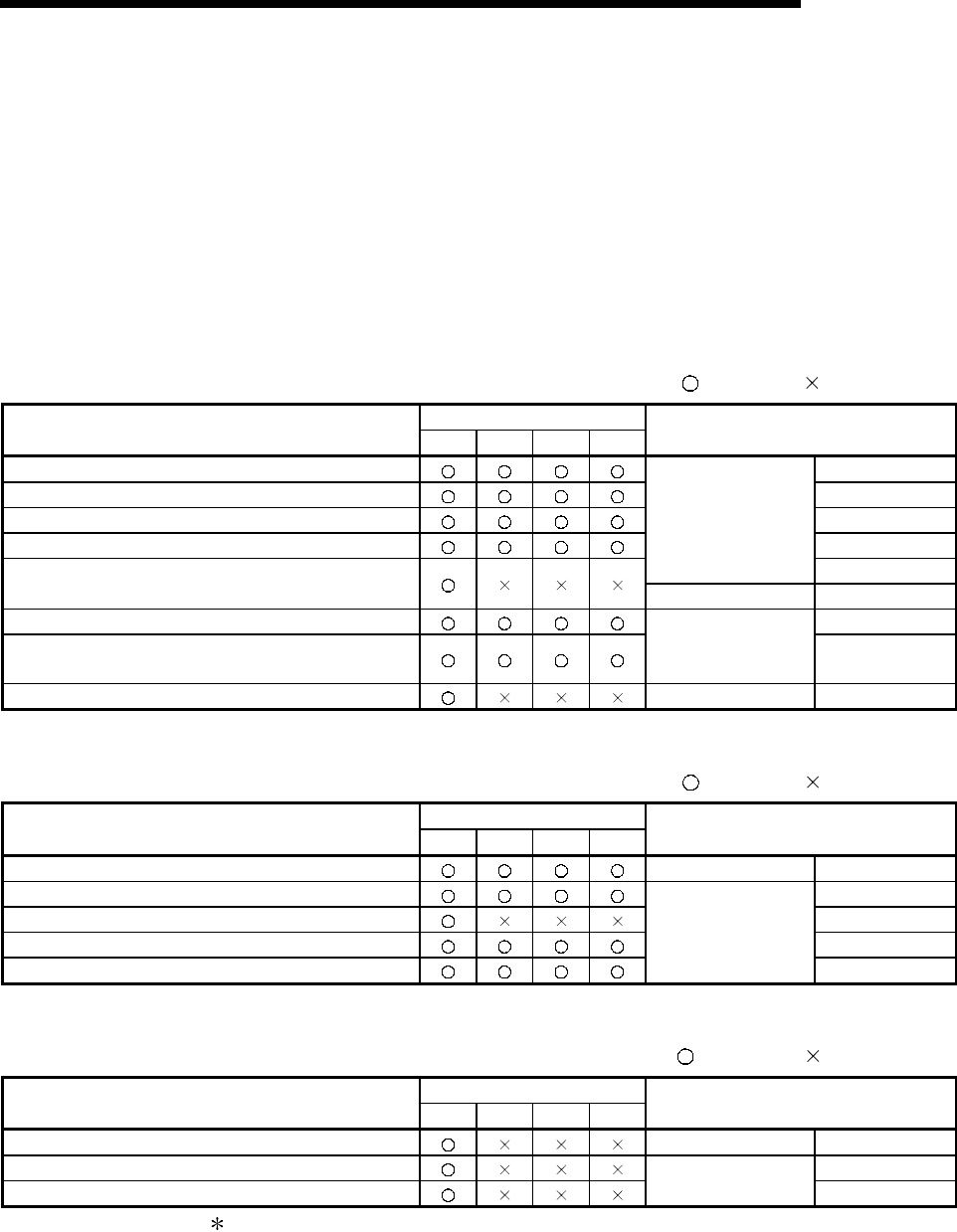
2 - 5 2 - 5
MELSEC-Q
2 SYSTEM CONFIGURATION AND AVAILABLE FUNCTIONS
(2) Correspondence between the data communication functions and
system configurations
The following shows system configurations that can use the data communication
functions of the Q series C24.
The manual names shown in the reference section column in the table below are
as follows:
• Application
Q Corresponding Serial Communication Module User's Manual (Application)
• Reference
Q Corresponding MELSEC Communication Protocol Reference Manual
(a) Communication using the MC protocol (
: Available, : Not available)
System configuration
Functions of the Q series C24
1 : 1 n : 1 1 : n m : n
Reference section
PLC CPU device memory read/write Section 3.3
Intelligent function module buffer memory read/write Section 3.5
Sequence program read/write Section 3.8
PLC CPU status control (remote RUN, STOP, etc.) Section 3.6
Reference
Section 3.11
On-demand function
Application Chapter 10
Global function Section 3.10
Accessing the PLC of other stations in the MELSECNET/H,
MELSECNET/10
Reference
Section 2.7
PLC CPU monitoring function Application Chapter 2
(b) Communication using the non procedure protocol
(
: Available, : Not available)
System configuration
Functions of the Q series C24
1 : 1 n : 1 1 : n m : n
Reference section
Data transmission/receiving in arbitrary format This manual Chapter 6
Data transmission/receiving with user frames Chapter 11
PLC CPU monitoring function Chapter 2
Reading received data using interrupt programs Chapter 4
Sending/receiving ASCII data using ASCII-BIN conversion
Application
Chapter 13
(c) Communication using the bidirectional protocol
(
: Available , : Not available)
System configuration
Functions of the Q series C24
1 : 1 n : 1 1 : n m : n
Reference section
Data transmission/receiving This manual Chapter 7
Reading received data using interrupt programs Chapter 4
Sending/receiving ASCII data using ASCII-BIN conversion
Application
Chapter 13
In general, if data communication is performed using a system configuration of
other than 1:1 connection mode, the following points should be well noted.
• Avoid simultaneous transmission.
• Discard data received other than that addressed to the local station.


















